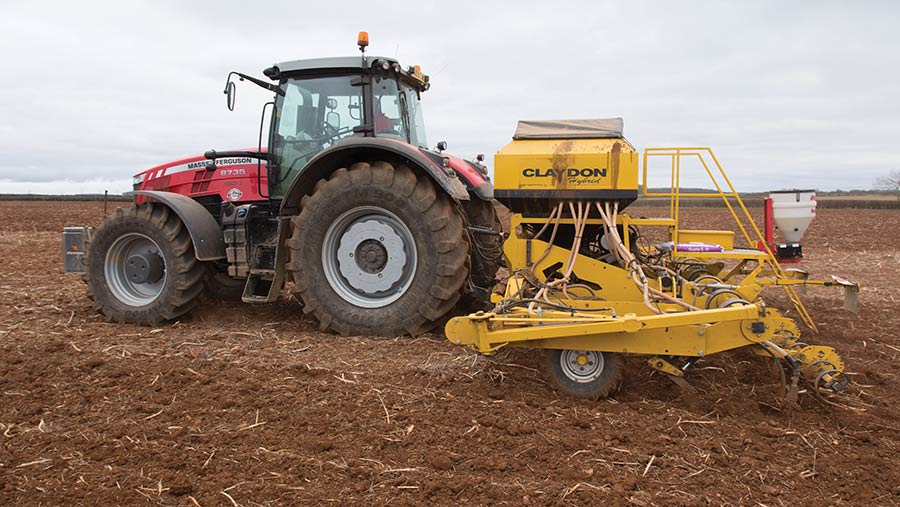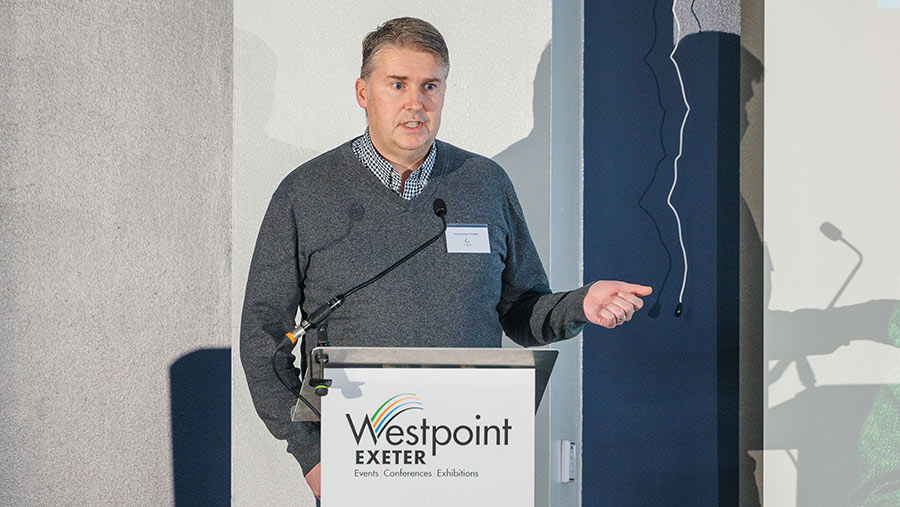Zero-till v plough: Differences in soil structure and carbon
 © Tim Scrivener
© Tim Scrivener A study across the East Midlands comparing the effects of zero-till and ploughing on soil structure has revealed how porosity and carbon accumulation evolves differently according to cultivation management.
The research carried out by the University of Nottingham demonstrated ploughed soils had a greater soil porosity (16% vs 12%) and larger pore size (0.84mm/sq m vs 0.49/sq m) compared to zero-tilled soils.
Despite the reduced porosity associated with zero-till, there was twice the connectivity between pores compared to ploughed soils, notes Sacha Mooney, professor in soil physics at the University.
See also: Could compaction-busting crops become a reality?
Soil carbon
Soils managed as zero-till for 15 years were found to contain 9% more soil carbon and 30% higher microbial biomass than ploughed soil.
“Extensive soil pore networks associated with zero-till is vital for soil processes with potential advantages for infiltration, whereas areas of soil that remain undisturbed can support carbon sequestration.
“However, with greater pore connectivity comes greater transport facilitation which could increase leaching risk. This is a reminder that soils are dynamic and changing management can have consequences that might have been unexpected.”
To identify variations in soil structure according to cultivation type, X-ray computed tomography (also known as CT scanning) was used to characterise the 3D soil pore network.

Prof Sacha Mooney © Katie Mortimore Photography
Carbon storage
Aggregate size and shape brought about clear changes in soil porosity with greater carbon storage associated with long term zero-till.
This is because soil aggregates under zero-till systems tend to be denser and with reduced porosity, which locks-in carbon in a more stable form.
Whereas aggregates under ploughed conditions are larger with greater porosity which enables soil microorganisms to access carbon to use as energy which is released as carbon dioxide
“The carbon that exists in the zero till aggregates is under very different conditions than ploughed.
“The soil is much denser, there is less poor space, there is less oxidisation and, therefore, less predation of carbon by microbes,” explains Sacha.
Average soil moisture content was also significantly higher under zero-tilled soils (41.8%) compared to tilled soils (35.7%) but with higher bulk density than tilled soils.
Tillage practice was not found to impact soil pH.
What the study involved
The study, led by Dr Hannah Cooper also from University of Nottingham involved assessing 31 farms across the East Midlands undergoing zero tillage were paired with traditional tillage operations.
Each paired field of zero-till versus plough was located adjacent to each other and the distances between paired fields did not exceed 10m.
The soils were managed in this way for a minimum of one year to a maximum of 15 years. The tilled soils were ploughed every year to a depth of at least 10cm.
Soil structure key to sustainability
The release of carbon dioxide, nitrous oxide and methane emissions were calculated from the two soil management systems with varying results due to the connection of pore spaces.
Carbon dioxide emissions were significantly higher from tilled soils than zero-tilled soil, with a mean value of 169mg/sq m an hour, while ploughed averaged 252mg/sq m an hour.
Methane emissions were generally higher from tilled soils – though not significantly.
However, nitrous oxide emissions were higher under zero-tilled soil (0.118mg/sq m an hour) than tilled soils (0.085mg/sq m an hour)
The study indicates that soil management practices strongly influence other soil properties such as pore space, water infiltration, carbon sequestration and aggregate size.
“By making suitable tillage system choices, particular soil functions can be selected for.
“Most important though is the structure of a soil as it has such a profound influence on all soil process.
“A healthy soil structure should be considered the key to sustainable agriculture,” concludes Sacha.
Prof Sacha Mooney Professor in Soil Physics at the University of Nottingham was presenting research at the annual Rootstock conference in Exeter, Devon.

